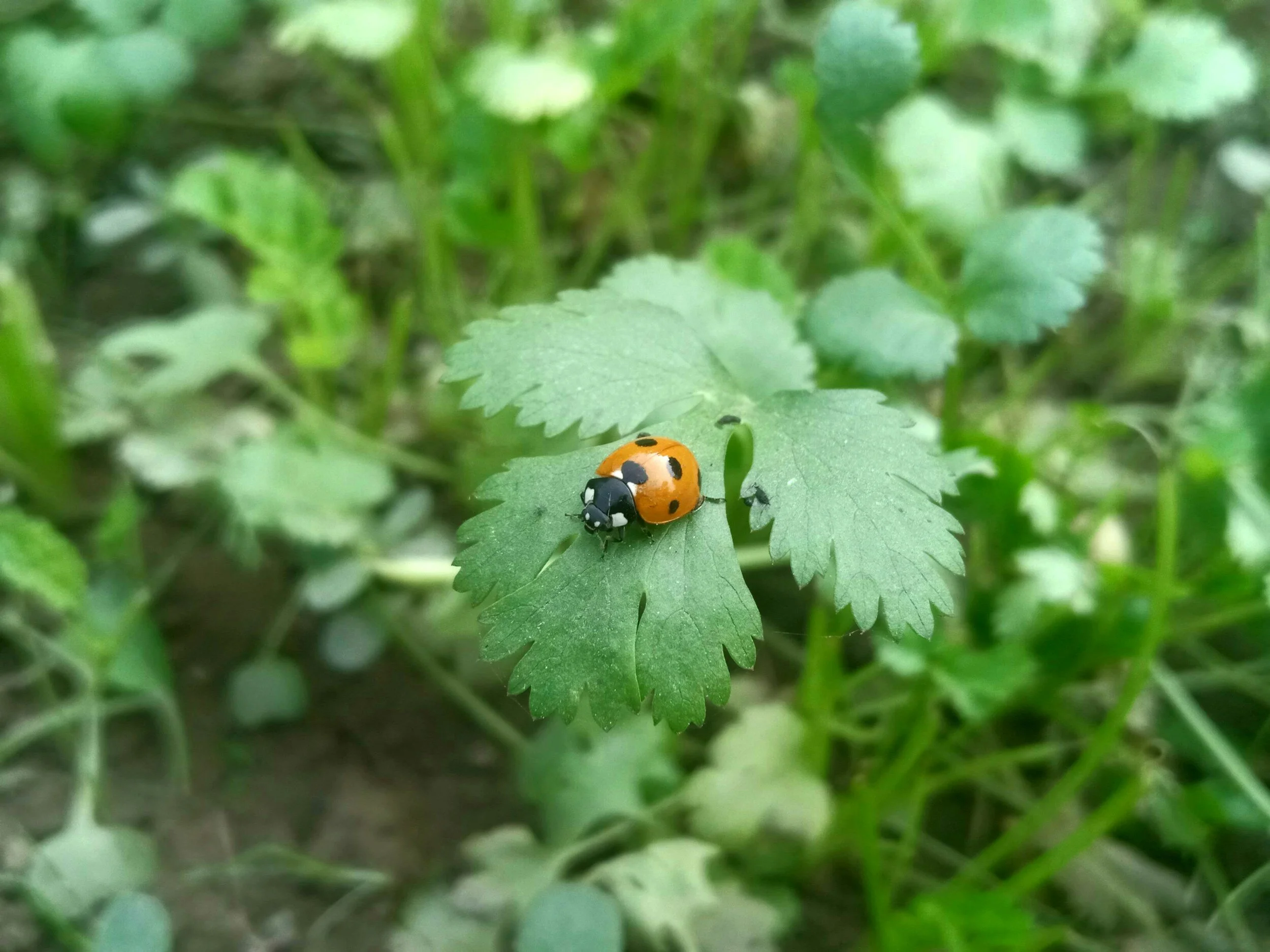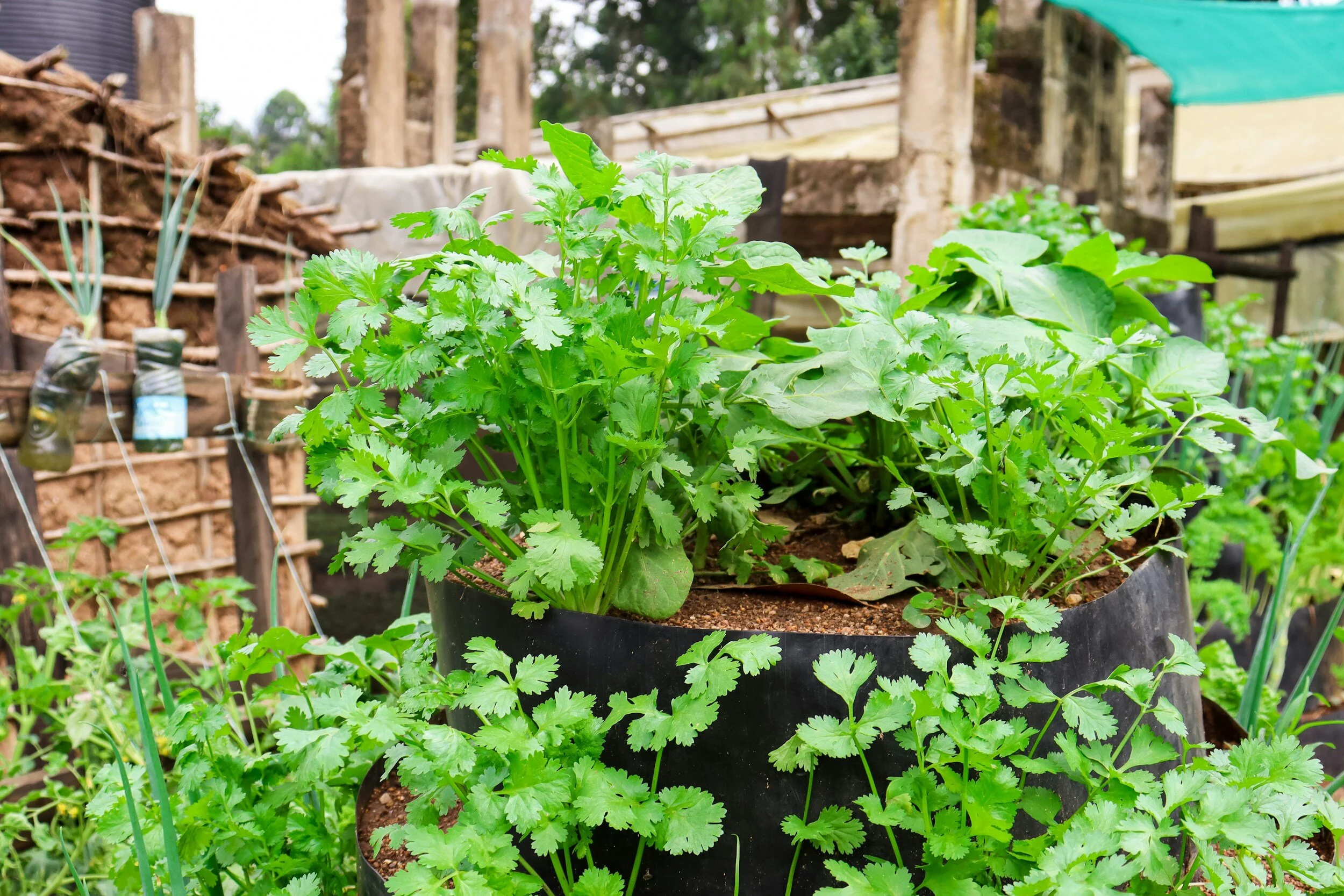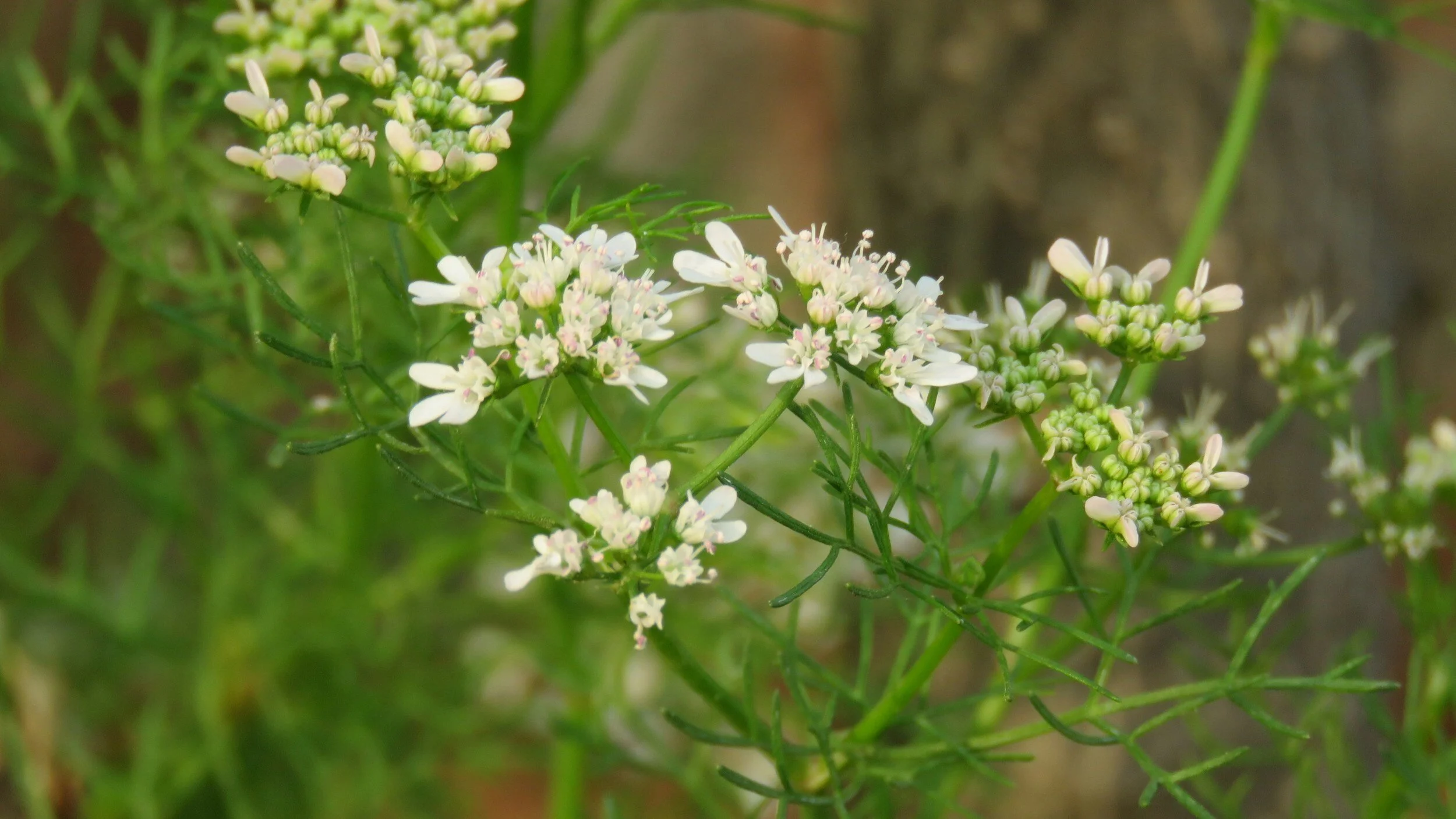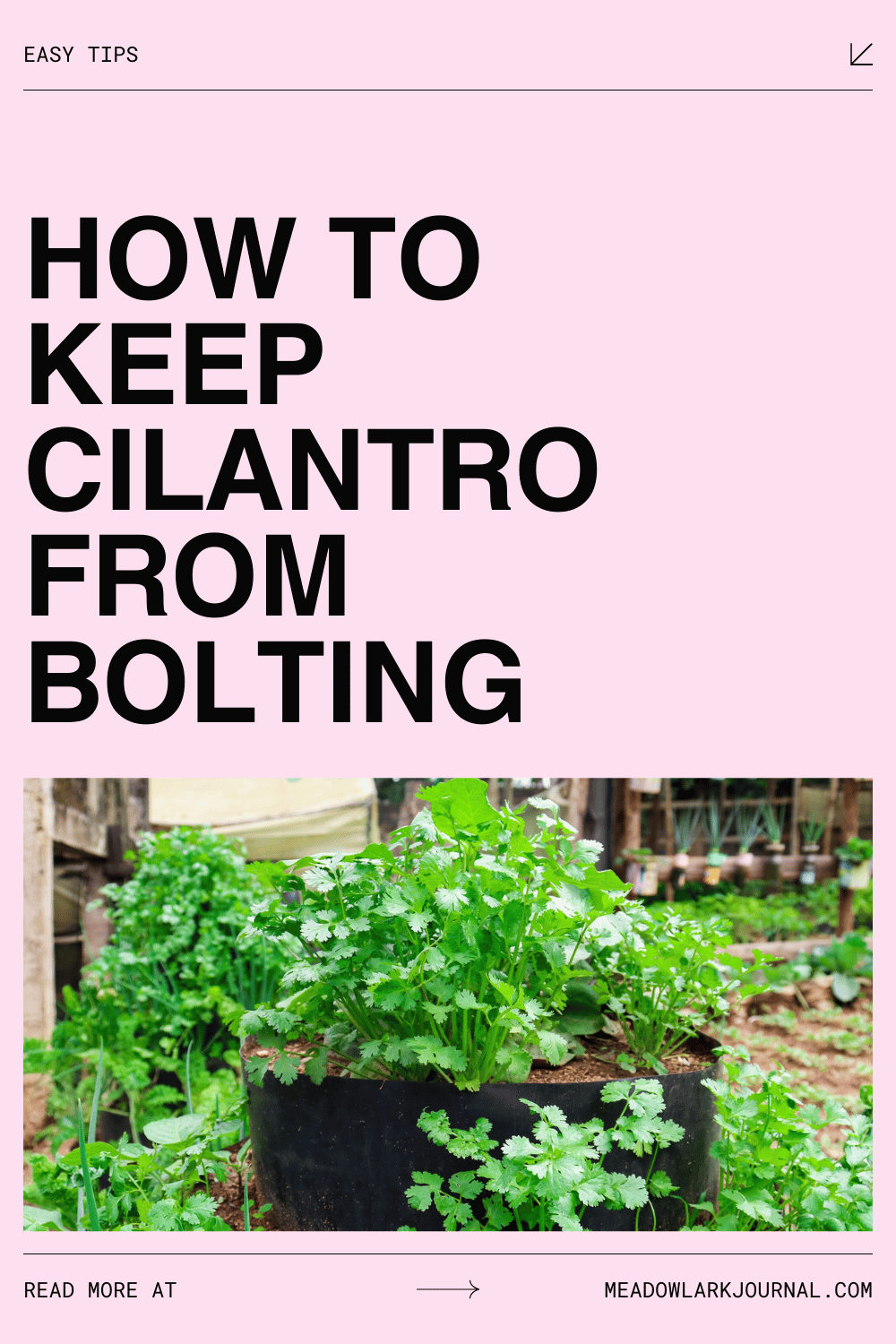The Easiest Ways to Keep Cilantro from Bolting
This website is reader-supported - thank you! This post may contain affiliate links. As an Amazon Associate, I earn from qualifying purchases at no extra cost to you.
Growing cilantro in your own space can be a challenge, especially when it comes to mastering the art of how to keep cilantro from bolting.
As the growing season kicks off, visions of a thriving vegetable garden filled with herbs basking in the sun become more of a reality.
Cilantro, with its unique flavor and countless culinary uses, often races towards bolting, leaving you in search of effective slow bolt techniques.
In this guide, we'll navigate through the ins and outs of growing cilantro — from the initial planting of seeds to the joy of harvesting its fragrant leaves.
Whether it's part of a diverse vegetable plot or a single pot on a sunny windowsill, understanding the nuances of cilantro's growth can lead to a rewarding harvest.
Join us as we explore practical tips and insights to ensure your cilantro thrives.
To learn more about growing cilantro, check out my guide:
Understanding Cilantro and Its Quick-to-Bolt Nature
When I first started my gardening journey, cilantro was one of those herbs that seemed to have a mind of its own.
Just when I thought I'd figured out the perfect spot in my garden, and visions of endless homemade guacamole danced in my head, my cilantro would suddenly shoot up stalks and sprout flowers.
I was left scratching my head and wondering where I went wrong.
Here's what I've learned about cilantro's unique character:
The Cool Herb in the Garden
Cilantro thrives in cooler temperatures, typically in the spring and fall.
It's a bit of a garden diva in that sense, preferring the spotlight when conditions are just right—not too hot and not too cold.
This preference is key to understanding why cilantro bolts.
When the temperatures start to climb, cilantro thinks its time on the garden stage is coming to an end and decides it's time for a grand finale: bolting.
Learn more about Herbs That Actually Grow Well in Shade.
Bolting: Cilantro's Survival Mechanism
Bolting is essentially cilantro's survival instinct kicking in.
When conditions signal that it might not be able to survive for much longer (like rising temperatures or lengthening days), cilantro shifts its energy from growing lush, flavorful leaves to producing flowers and seeds.
This ensures that it can reproduce and secure the next generation of cilantro plants.
While this is great for cilantro's survival, it's not so great for us gardeners looking to harvest fresh leaves.
The Fast Track to Seeds
What's fascinating about cilantro is how quickly it can bolt.
One day you might have a bushy, leafy plant, and seemingly overnight, it starts to shoot up taller stems that will soon bear flowers.
These flowers will eventually produce coriander seeds, which is the spice we get from the cilantro plant.
So, in a way, when your cilantro bolts, you're getting a two-for-one deal: fresh herbs now and spices for later.
Environmental Triggers
Several factors can trigger bolting, including:
Temperature spikes:
A sudden increase in temperature can signal to cilantro that it's time to bolt.
Long days:
As the days get longer, cilantro may interpret this as a sign to start its reproductive stage.
Stress:
Any form of stress, whether it's from lack of water, nutrient deficiencies, or being transplanted, can prompt cilantro to bolt.
Understanding these triggers is crucial for anyone looking to keep their cilantro leafy and delay the bolting process as long as possible.
By managing these environmental factors, you can enjoy our cilantro for a bit longer, even if you can't stop the inevitable march toward flowering and seed production.
For more herb garden tips, check out my guides:
Herbs That Can Be Planted Together: The Best Combinations
How to Keep Your Cilantro from Bolting
Cilantro's tendency to bolt can be a bit of a headache, but with a few gardening tricks up your sleeve, you can extend your harvest period significantly.
Here's how:
Pick the Right Time
Timing is crucial when it comes to planting cilantro.
Because it prefers cooler temperatures, planting at the right time can make all the difference.
In cooler climates, plant cilantro in early spring or late summer so it matures when the weather is mild.
For warmer regions, timing your planting for the fall through to the spring can help avoid the hottest months.
Additionally, practicing succession planting—sowing seeds every few weeks—ensures a continuous supply of cilantro before any one batch has a chance to bolt.
Learn more with my guide: What is Succession Planting? Grow More in Less Space.
Here are the cilantro seeds I recommend growing:
Location, Location, Location
Finding the perfect spot in your garden or on your balcony for cilantro can dramatically affect its growth.
Cilantro does best in a location that receives morning sunlight but is protected from the intense heat of the afternoon.
If you're working with a particularly sunny garden, consider using taller plants or a shade cloth to provide some respite from the heat.
This strategic placement can help keep the soil and plant cooler, reducing the stress that leads to bolting.
Here is the shade cloth I recommend:
Water Wisdom
Consistent watering is key to preventing stress in cilantro plants, which can precipitate bolting.
The goal is to keep the soil moist but not waterlogged.
Using a mulch can help retain soil moisture and keep the roots cool.
Overhead watering in the cooler part of the day helps lower the plant's temperature and can be particularly beneficial during hot spells.
This is a great way to use rainwater collected from a water butt.
To learn more, check out my guide: Water Butts: Sustainable Water Storage for Your Garden.
Keep It Cool
Mulching plays a significant role in keeping cilantro from bolting.
A good layer of organic mulch not only helps retain soil moisture but also keeps the soil temperature down.
Learn more about mulching with my guide: The Best Alternatives to Traditional Mulch for Your Garden.
Additionally, cooling the soil with periodic waterings or by placing ice around the plant base on extremely hot days can prevent bolting.
This trick simulates cooler conditions, tricking cilantro into thinking it's still early in the season.
Here is the mulch I recommend:
Trim and Harvest
Regular harvesting is perhaps one of the most effective ways to encourage cilantro to keep producing leaves instead of bolting.
Don't be shy; cutting off about one-third of the plant encourages new growth and can delay the formation of flowers.
It's a balancing act of harvesting enough to stimulate growth but not so much that the plant becomes stressed.
Choose Slow-Bolting Varieties
Some cilantro varieties are bred specifically to resist bolting, known as "slow bolt" varieties.
These types have a longer leaf production period before they start to flower.
Incorporating these into your garden can give you a longer harvest time and less worry about bolting.
Here is the slow-bolt variety I recommend:
For more herb garden tips, check out my guides:
The Ultimate Guide to Growing Chives in Pots
To learn more about starting an herb garden, check out my guide:
FAQs
Can You Eat Bolted Cilantro?
Yes, you can still eat cilantro after it has bolted, but be prepared for a change in flavor and texture.
Bolted cilantro leaves tend to become more bitter and less tender.
While the taste might not be ideal for some fresh dishes like salads or garnishes, you can still use bolted cilantro in cooked recipes where the bitterness can be offset by other flavors.
Think soups, stews, or marinades where cilantro's potent flavor can still shine without dominating the dish.
How Do You Keep Cilantro from Bolting in Pots or Indoors?
Keeping cilantro from bolting in pots or indoors revolves around temperature and light management.
Ensure your plants are in a cool area away from direct, harsh sunlight for extended periods.
Using grow lights with a timer can help simulate the ideal amount of daylight, preventing the stress that leads to bolting.
Additionally, keep the soil consistently moist and ensure good airflow around the plants to mimic the outdoor conditions cilantro prefers.
Here are the grow lights I recommend:
What to Do When Cilantro Flowers?
When cilantro flowers, it’s a sign that the plant has entered its reproductive stage, but it's not necessarily the end for your harvest.
You can:
Harvest the flowers:
Cilantro flowers are edible and can add a decorative touch and a mild cilantro flavor to salads, dishes, and even cocktails.
Collect seeds:
Let the flowers develop into coriander seeds, which you can harvest and use as a spice or replant for more cilantro.
Encourage leaf production:
Trim back the flowers to try and stimulate a few more leaves, though this might be less effective as the plant continues to age.
Why Is My Cilantro Flowering?
Cilantro flowers as a natural response to certain triggers, such as rising temperatures, long daylight hours, or stress conditions (e.g., lack of water, nutrient deficiency).
It's the plant's way of ensuring its seeds are produced for the next generation before conditions become unfavorable for its survival.
What to Do With Cilantro After It Bolts?
After your cilantro bolts, you have a few beneficial options:
Let it grow:
Allow your cilantro to complete its lifecycle and produce seeds.
The seeds (coriander) can be harvested and used in cooking or saved for planting next season.
Attract beneficial insects:
Bolted cilantro flowers attract beneficial insects to your garden, such as pollinators and predators of common pests.
Compost it:
If you prefer not to keep the bolted plants, you can add them to your compost pile.
Just make sure they haven’t gone to seed unless you want surprise cilantro plants popping up in your compost-derived garden soil.
For more herb garden tips, check out my guides:
Mint to Be Together: Choosing Companion Plants for Mint
Wrap-up
Navigating the challenges of cilantro bolting is a big part of cultivating this beloved herb in your garden.
With the knowledge and strategies discussed, hopefully you’re now better equipped to extend the harvest period of your cilantro, ensuring those precious leaves remain tender and flavorful for as long as possible.
Remember, starting with cilantro seeds indoors can give you a jumpstart on the season, providing young plants that are ready to thrive under the careful considerations of your garden design.
The journey from seed to harvest is filled with lessons on patience, timing, and adaptation.
By understanding the needs of cilantro and employing tactics to slow down its bolting process, you create a harmonious balance in your garden that benefits not just cilantro but all your plants.
As the season progresses and you find yourself with cilantro seeds once more, remember that each seed holds the potential for the next season's growth.
Pin this post to save it for later!






































